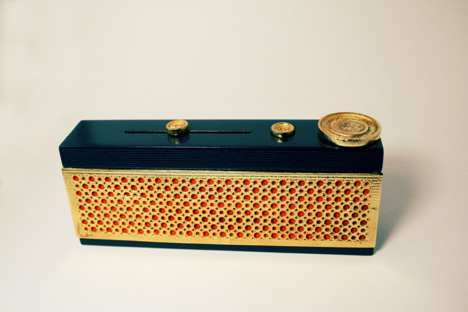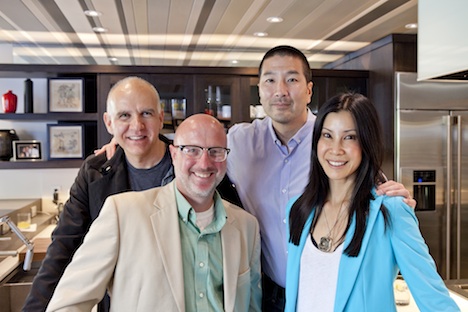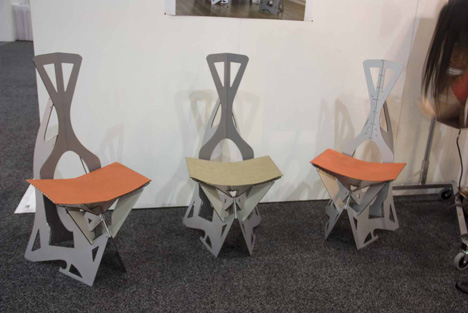 Photos courtesy of Greer Garner
Photos courtesy of Greer Garner
We've seen plenty of decent portable speakers over the years—as one of many iDevice peripherals that designers continue to revisit, "Zooka" speaker bar for iPad and fuseproject's Jambox (a Core77 2011 Design Awards notable) come to mind—as well as a resurgence in vintage speaker restoration (an offshoot of the maker movement, perhaps): Joe Dobson and Devin Ward are just two recent examples. Designer Greer Garner has combined vintage aesthetics with handheld convenience (and digital fabrication to boot) in "Sway," a portable speaker with interchangeable hardware.
Sway is designed so the user can customise parts to reflect their own personal style. The speaker grills have changeable designs, along with a silk layer that adds a splash of colour and protects the electronics. Being able to influence the look of the music player helps build a stronger attachment to the device and encourages people to think of electronics as something to be treasured.


All of the external components of "Sway" are 3D-printed: the enclosure is made of nylon, spraypainted in navy, while the buttons and knobs are made of copper-coated resin and electroplated in gold. A strip of silk conceals the 28mm speaker cones while allowing sound to pass without muffling or distortion. The device is USB rechargeable via the 3.5mm audio jack.






















 The entrance to Punchouse 234 features a sunken playspace. The lawn is made from synthetic turf that requires no water for maintenance.
The entrance to Punchouse 234 features a sunken playspace. The lawn is made from synthetic turf that requires no water for maintenance. The Punchouse team with the new homeowners.
The Punchouse team with the new homeowners. The backyard space is perfectly suited for cocktails and entertaining.
The backyard space is perfectly suited for cocktails and entertaining.



 Folditure just launched in June.
Folditure just launched in June. Folditure's Leaf chairs can be hung in a regular closet.
Folditure's Leaf chairs can be hung in a regular closet. The junior seats come in a range of bright colors.
The junior seats come in a range of bright colors. A quick demonstration of the seat's ease of use.
A quick demonstration of the seat's ease of use.
 A nod to Daft Punk?
A nod to Daft Punk?
 Photo by Craig Sillitoe for
Photo by Craig Sillitoe for 








 All of these T's were originally in a single column...
All of these T's were originally in a single column... This gradient was originally 8000+ pixels high...
This gradient was originally 8000+ pixels high...







